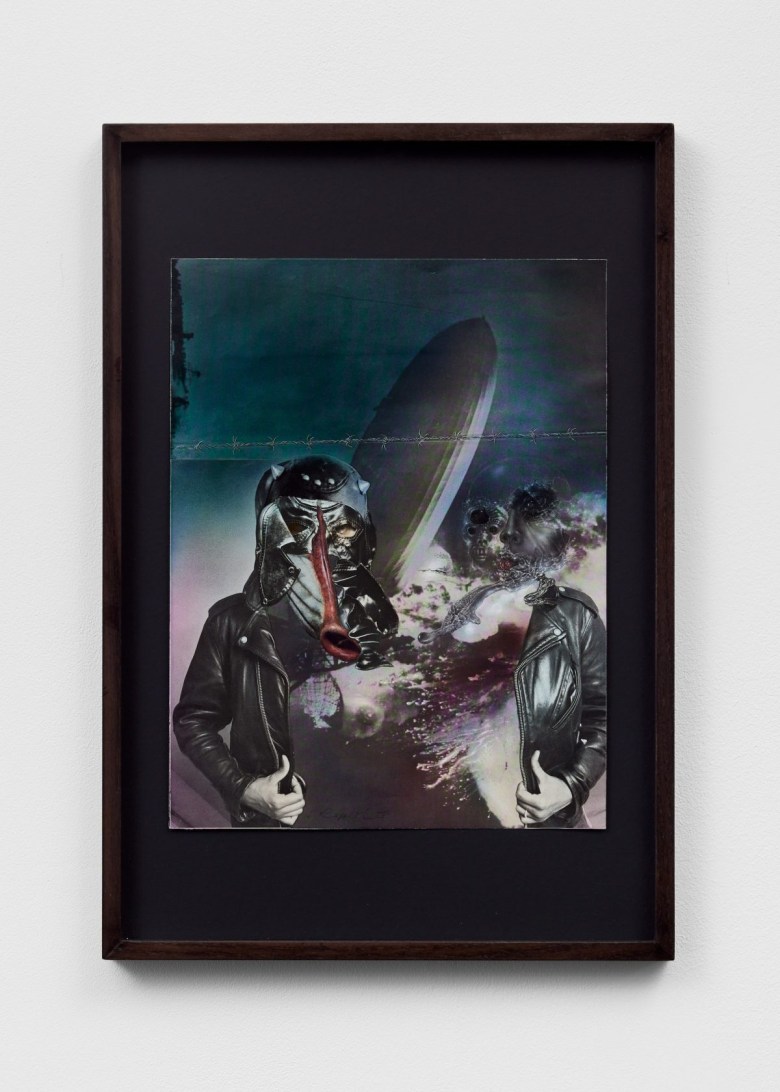LONDON — In the charcoal drawing “Ma Soeur mon Epouse” (1975) the contorted body of a figure with a penis and breasts is devoured by a bird-reptile hybrid, the beak tugging at the carotid while a single eye gazes blankly forward. Sibylle Ruppert’s monsters are an amalgam of the abject, the sadistic, and the hallucinatory. These erotic references can range from the literal — one monster’s head entirely consists of the head of a phallus — to the stylistic: In certain works, she covers flailing human limbs, appendages, and digits with painfully bulging vascular detailing. Like her forebears and noted influences Hans Bellmer, Salvador Dali, Francis Bacon, and Georges Bataille, Ruppert’s muse is sado-masochism — hence, her dedication of a ‘72 etching, on view in this show, to the Marquis.
Frenzy of the Visible at Project Native Informant, the first UK solo exhibition of work by the artist, displays drawings and collages Ruppert made throughout the ’70s and ’80s. These works depict the human figure — albeit grotesquely disfigured — with accomplished draftsmanship. The musculature in her 1970s works, including “Ma Soeur mon Epouse,” “J’ecrasai le Ver luisant” (1979), and her largest work, a triptych titled “La Bible du Mal” (1978), recall the accentuated and sublime bodies created by Michelangelo, whose homoerotic sketches portray the human figure with rippling, heavily shaded muscles. Ruppert shares a sensibility with the Renaissance master, too — the latter’s melancholic sketch “Il Sogno” (c. 1533) was widely identified as an allegory for the human soul awakened to virtue from vice. Those vices are shown as twisting, thrashing human figures surrounding a tortured human soul. Ruppert’s work can be read as the inverse: in “La Bible du Mal,” for instance, vices surround, engulf, and even penetrate her human protagonists.
Frenzy Of The Visible posthumously celebrates an artist whose oeuvre was largely ignored in her lifetime, as is often the case with female artists dealing with transgressive subject matter. But it’s a fitting time for Ruppert’s work, which now finds itself amid a milieu of film and theory exploring the transhuman. One of her most significant influences, H.R. Giger, created the design work in Ridley Scott’s 1979 film Alien. Ruppert’s mechanic body horror is also suggested in the film Titane (2021), wherein a woman is impregnated by a car. Julia Ducournau’s accelerationist porno almost totally recalls the artist’s camp sketch “Hit Something” (1977), which depicts a human/motorcycle hybrid. The product is, as Comte de Lautréamont wrote in Les Chants de Maldoror (1869), “as beautiful as the chance encounter of a sewing machine and an umbrella on an operating table.” Ruppet’s inner world is a swirl of dark fantasies and private traumas that, in true surrealist fashion, emanate a compulsive beauty.



Sibylle Ruppert: Frenzy of the Visible continues at Project Native Informant (48 Three Colts Lane, London) through April 20. The exhibition was organized by the gallery.

